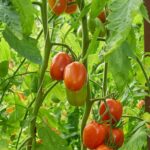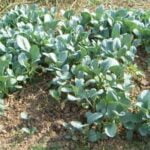Pyrethrin is a commonly used pesticide in vegetable gardens, but many gardeners have concerns about its safety. In this article, we will explore the use of pyrethrin in vegetable gardens and address the question: is pyrethrin safe for vegetable gardens? We will delve into the intricacies of this natural insecticide and provide information on how to use it effectively while minimizing potential risks.
Pyrethrin is derived from the chrysanthemum flower and has been used for centuries as a natural insecticide. It is often considered safe for use in organic gardening due to its low toxicity to humans and animals. However, there are still important considerations to keep in mind when using pyrethrin in vegetable gardens.
In this article, we will discuss how pyrethrin works as a pesticide and the potential risks associated with its use in vegetable gardens. We will also provide guidance on which common vegetables and plants can be treated with pyrethrin, as well as best practices for using it effectively.
Additionally, we will compare pyrethrin to other pesticide options for vegetable gardens and offer tips for maintaining a healthy garden while using pyrethrin. Stay tuned as we uncover the facts about pyrethrin and its safety in vegetable gardens.
How Does Pyrethrin Work as a Pesticide?
Pyrethrin, derived from the chrysanthemum flower, is a natural pesticide that has been used for centuries to control pests in vegetable gardens. This botanical insecticide is known for its effectiveness in controlling a wide range of pests including aphids, beetles, caterpillars, and other harmful insects. Pyrethrin works by targeting the nervous system of the insects, causing paralysis and ultimately leading to their death.
Mode of Action
Pyrethrin affects the insects’ nerve cells by delaying their closure, leading to uncontrolled firing and causing paralysis. This eventually leads to the death of the insect. One of the advantages of pyrethrin is its ability to break down rapidly when exposed to light and air, making it safer for use in organic farming.
Low Toxicity
One important factor to consider when using any pesticide in vegetable gardens is its safety for humans and other non-target organisms. Pyrethrin is known for its low toxicity in mammals because it is rapidly metabolized and excreted from the body. However, it should still be used with caution around aquatic organisms.
Effectiveness
While pyrethrin is highly effective at controlling a wide range of pests in vegetable gardens, it may not provide long-term control as some synthetic pesticides do. However, it can be an important part of an integrated pest management plan that includes rotating different types of treatments to minimize resistance buildup in pest populations.
In summary, understanding how pyrethrin works as a pesticide helps vegetable gardeners make informed decisions about its use. While it is generally considered safe for use in vegetable gardens when used according to label instructions, gardeners should still exercise caution and consider alternative methods of pest control when possible.
The Potential Risks of Using Pyrethrin in Vegetable Gardens
Environmental Impact
Pyrethrin is considered to be a relatively safe option for pesticide use in vegetable gardens when compared to synthetic chemical pesticides. However, it is important to consider the potential impact of pyrethrin on the environment. While pyrethrin breaks down quickly when exposed to sunlight and air, it can still have harmful effects on non-target insects such as bees and other beneficial pollinators.
Additionally, if pyrethrin runs off into water sources, it can be toxic to aquatic life. Therefore, it is essential to use pyrethrin sparingly and follow best practices for application.
Health Risks
Although pyrethrin is generally considered safe for use around humans and pets, there are still some potential health risks associated with its use in vegetable gardens. Direct contact with pyrethrin can cause skin irritation and allergic reactions in some individuals. Inhaling pyrethrin through spray applications may also lead to respiratory issues. It is important for gardeners to take precautions such as wearing protective clothing and using proper ventilation when applying pyrethrin in their vegetable gardens.
Effects on Beneficial Insects
One of the potential risks of using pyrethrin in vegetable gardens is its impact on beneficial insects. While pyrethrin targets a wide range of insect pests, it can also harm natural predators such as ladybugs and parasitic wasps that help control garden pests naturally. To minimize this risk, gardeners should consider alternative pest management strategies and avoid blanket applications of pyrethrin that may negatively affect beneficial insects.
Common Vegetables and Plants That Can Be Treated With Pyrethrin
Pyrethrin is a natural insecticide derived from chrysanthemum flowers. It is widely used in vegetable gardens to control a variety of pests, including aphids, beetles, caterpillars, and moths. This natural pesticide is considered safe for use on many common vegetables and plants, making it a popular choice for organic gardeners.
Some of the most common vegetables that can be treated with pyrethrin include tomatoes, peppers, cucumbers, and squash. Additionally, it is also safe to use pyrethrin on leafy greens such as lettuce, spinach, and kale. When used according to the label instructions, pyrethrin can effectively control pests on these crops without leaving harmful residues.
One of the main advantages of using pyrethrin in vegetable gardens is its fast degradation in the environment. This means that it breaks down quickly after application and does not persist in the soil or on the plants for an extended period of time. As a result, it minimizes the risk of contaminating the harvested produce with pesticide residues.
According to studies by the Environmental Protection Agency (EPA), pyrethrin has been found to have low toxicity to humans and mammals when used as directed. However, it is important to follow proper application guidelines and safety precautions when using any pesticide in your vegetable garden.
Best Practices for Using Pyrethrin in Vegetable Gardens
Pyrethrin is a natural insecticide derived from chrysanthemum flowers. It has been used for centuries to control pests in gardens, including vegetable gardens. Pyrethrin is considered a safe option for controlling a wide range of pests, including aphids, beetles, and caterpillars, making it popular among gardeners who prefer to use organic methods.
When using Pyrethrin in vegetable gardens, it is important to follow best practices to ensure its effectiveness while minimizing any potential risks. One of the key considerations is to apply Pyrethrin during the early morning or late evening when beneficial insects are less active. This helps to target the pests while minimizing harm to beneficial insects such as bees and butterflies.
Another best practice for using Pyrethrin in vegetable gardens is to focus on spot-treating areas with pest infestations rather than applying it indiscriminately across the entire garden. This targeted approach helps to minimize the impact on non-target organisms and reduces the overall amount of Pyrethrin being used in the garden.
It is also important to read and follow the label instructions when using Pyrethrin in vegetable gardens. This includes understanding the application rates, re-application intervals, and any safety precautions that need to be taken during and after application. Additionally, storing and disposing of Pyrethrin properly is essential for preventing any potential environmental contamination.
| Best Practices for Using Pyrethrin | Vegetable Gardens |
|---|---|
| Apply during early morning or late evening | Targeted spot-treatment for pest infestations |
| Read and follow label instructions | Proper storage and disposal |
Comparing Pyrethrin to Other Pesticide Options for Vegetable Gardens
When it comes to choosing the right pesticide for your vegetable garden, it’s important to consider the effectiveness and safety of the product. Pyrethrin is a popular choice for many gardeners, but how does it compare to other pesticide options? Let’s take a look at how Pyrethrin stacks up against some common alternatives.
Comparing Pyrethrin to Other Pesticide Options
- Neem Oil: Neem oil is another natural pesticide often used in vegetable gardens. While both neem oil and pyrethrin are derived from plants, they work in different ways. Neem oil works by suffocating and repelling pests, while pyrethrin affects the nervous system of insects.
- Bt (Bacillus thuringiensis): Bt is a bacterial pesticide that specifically targets certain insect larvae, such as caterpillars. Unlike pyrethrin, which is effective against a wide range of insect pests, Bt is more targeted in its approach.
- Insecticidal Soap: This option is popular for controlling soft-bodied pests like aphids and spider mites. Insecticidal soap works by disrupting the cell membranes of insects, causing them to dehydrate and die.
Each of these pesticide options has its own set of benefits and drawbacks. While pyrethrin may be effective against a wide range of pests, it’s important to consider its potential risks and impact on non-target organisms when compared to other options.
Ultimately, the best choice for your vegetable garden will depend on the specific pests you’re dealing with, as well as your overall gardening philosophy and practices. It’s essential to weigh the pros and cons of each pesticide option before making a decision that will affect the health of your garden ecosystem.
Tips for Maintaining a Healthy Vegetable Garden While Using Pyrethrin
Pyrethrin is a natural pesticide derived from chrysanthemum flowers, making it an attractive option for those looking for organic pest control solutions for their vegetable gardens. However, while pyrethrin can effectively control a wide range of garden pests, it’s important to be mindful of its potential impact on the overall health of your vegetable garden. Here are some tips for maintaining a healthy vegetable garden while using pyrethrin:
1. Rotate your crops: One way to minimize the need for pesticides like pyrethrin is to practice crop rotation. By regularly rotating your crops, you can help prevent the buildup of pests and reduce the reliance on pesticides.
2. Use row covers: In addition to using pyrethrin as a pesticide, consider using row covers to physically protect your plants from pests. This can help reduce the need for frequent applications of pyrethrin and promote healthier plant growth.
3. Monitor and scout regularly: Keep a close eye on your vegetable garden and regularly scout for signs of pest infestations. Early detection can help you address pest issues before they escalate and minimize the need for aggressive pesticide use.
As an organic pesticide, pyrethrin is generally considered safe when used properly in vegetable gardens. However, it’s important to follow best practices to ensure that its use does not negatively impact the health of your plants or the environment. By incorporating these tips into your gardening routine, you can maintain a healthy vegetable garden while effectively managing pests with pyrethrin.
Conclusion
In conclusion, the question of whether Pyrethrin is safe for use in vegetable gardens can be answered with a resounding yes. When used properly and in accordance with best practices, Pyrethrin can effectively control pests while minimizing harm to plants, beneficial insects, and humans. Its natural origins make it an appealing choice for gardeners looking for a safer alternative to synthetic pesticides.
While there are potential risks associated with using Pyrethrin in vegetable gardens, such as the possibility of harming non-target insects or causing skin irritation if not handled properly, these risks can be mitigated through careful application and adherence to usage guidelines. It’s important for gardeners to educate themselves on the proper ways to use Pyrethrin to ensure its effectiveness without causing harm.
When comparing Pyrethrin to other pesticide options for vegetable gardens, its favorable safety profile and ability to break down quickly in the environment make it a preferred choice for many environmentally-conscious gardeners. However, it’s always important to consider individual garden needs and consult with experts before making any pesticide decisions. Overall, when used responsibly, Pyrethrin is a safe and effective option for controlling pests in vegetable gardens.
Frequently Asked Questions
Is Pyrethrin Safe for Organic Gardening?
Pyrethrin is considered safe for organic gardening because it is derived from chrysanthemum flowers and breaks down quickly in the environment. It is approved for use on organic crops by the USDA.
Can Pyrethrin Be Used on Tomatoes?
Pyrethrin can be used on tomatoes to control insect pests. When applied properly, pyrethrin can effectively manage common tomato pests such as aphids, whiteflies, and caterpillars without leaving harmful residues on the fruit.
Is Permethrin Safe to Use on Vegetables?
Permethrin is generally safe to use on vegetables, but it is important to follow the label instructions carefully to ensure its proper application and dosage. When used according to the guidelines, permethrin can effectively control vegetable garden pests while minimizing potential risks.

If you’re looking to get into vegetable gardening, or are just looking for some tips on how to make your current garden better, then you’ve come to the right place! My name is Ethel and I have been gardening for years. In this blog, I’m going to share with you some of my best tips on how to create a successful vegetable garden.





